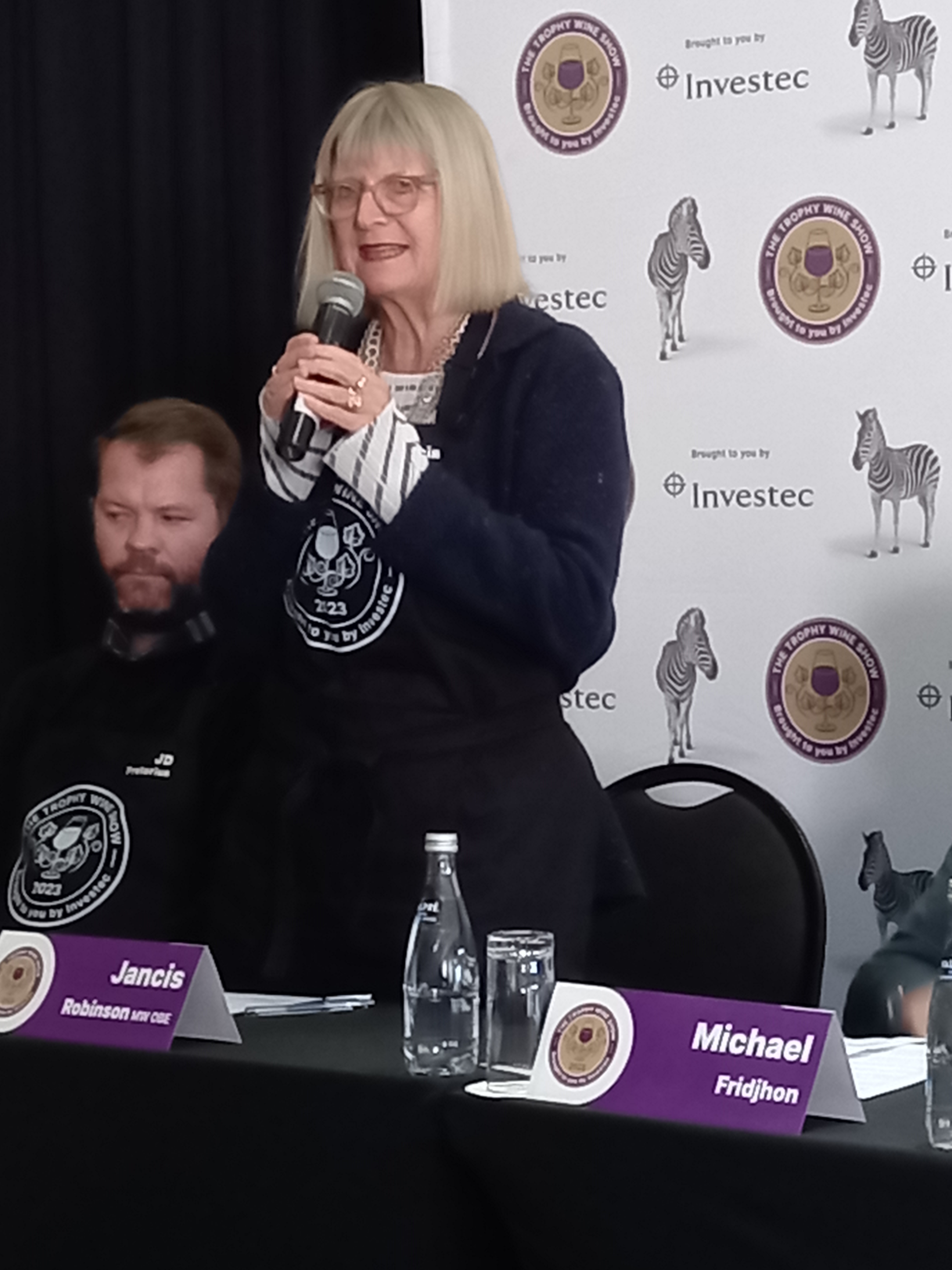Chardonnay’s time to shine
“Chardonnay was a pleasure to judge,” the doyenne of international wine writing Jancis Robinson said in her summation at the annual Investec Trophy Wine Show (TWS) feedback session in Somerset West recently.
Robinson’s last visit to South Africa – also to judge at the TWS – was in 2007 so it’s been a long time since she has visited local vineyards. That’s not to say she’s in any way out of touch. Far from it. “South African wines have been brilliant for just ages and ages,” she said. “I’ve been happy to champion them.”

Above: Jancis Robinson MW OBE at the 2023 Investec Trophy Wine Show judges feedback session
One keen observation she had is that the best examples showed the impact of a maritime or ocean influence “more so than other non-European chardonnays”. Overall, the refinement and sophistication of the categories she judged were praised; namely shiraz, chardonnay, pinot noir and cabernet sauvignon.
While pinot has room to improve, Robinson said the local examples of chardonnay assessed in the competition “showed hardly any signs of unresolved oak – which is very important, certainly in chardonnay.” Comparisons might be odious but they are also inevitable and Burgundy in the all-important UK market is becoming more and more expensive. SA might lack the subtlety of the best (white) Burgundies she said, “but they also lack the faults of the worst – and they are also available at a fraction of the price!” And with straitened economic times causing most belts to be buckled a notch or two tighter, price is a factor – even at the top end.
American chardonnay will always be big, bold, ripe and oaky because that’s the way they like them Stateside, but Robinson said newer plantings in cooler areas on the Sonoma coast could see some restraint being applied in years to come.
Australia and New Zealand had, in her opinion, gone too far. “Some of their best chardonnays are almost too restrained, nearly to the point of austerity,” she said in conversation after the feedback session. Acids are high and the wines somewhat lean, potentially lacking the ripeness and fruit which used to be a calling card, particularly for Australian wines.
Following a week later was the news that Elgin pioneer Paul Clüver Wines’ Seven Flags 2021 vintage had been awarded the white wine trophy for South Africa at the 2023 International Wine Challenge held in London in April.
Local Master of Wine Cathy van Zyl echoed Robinson’s assessment. “In the past three years that I’ve judged at Trophy, there’s been a dramatic improvement in chardonnay,” she said. Just two weeks earlier, Van Zyl had been part of both the IWC judging as well as the South African panel at the annual Decanter World Wine Awards (DWWA), also held in London. * While the results of the DWWA will only be announced on June 7, it was noted by the judges that this same category produced multiple gold medals for being rated a unanimous 95 points out of 100.
South African producers can expect north of 40 gold medals at the competition with chardonnay easily accounting for more than a quarter of them. Notable is that most of these medals were awarded to wines retailing in the all-important UK market from £30 to £50-plus – or R700 to R1200-plus at the current rate of exchange.
It might pain local consumers to pay those sorts of prices for chardonnay, but for international consumers it is a genuine bargain. But that’s the price of being recognised as a world-class producer!
- BLog by Fiona McDonald
Note: Fiona McDonald chairs the South African panel of the Decanter World Wine Awards.
The Investec Trophy Wine Show results will be announced in Cape Town on June 8.